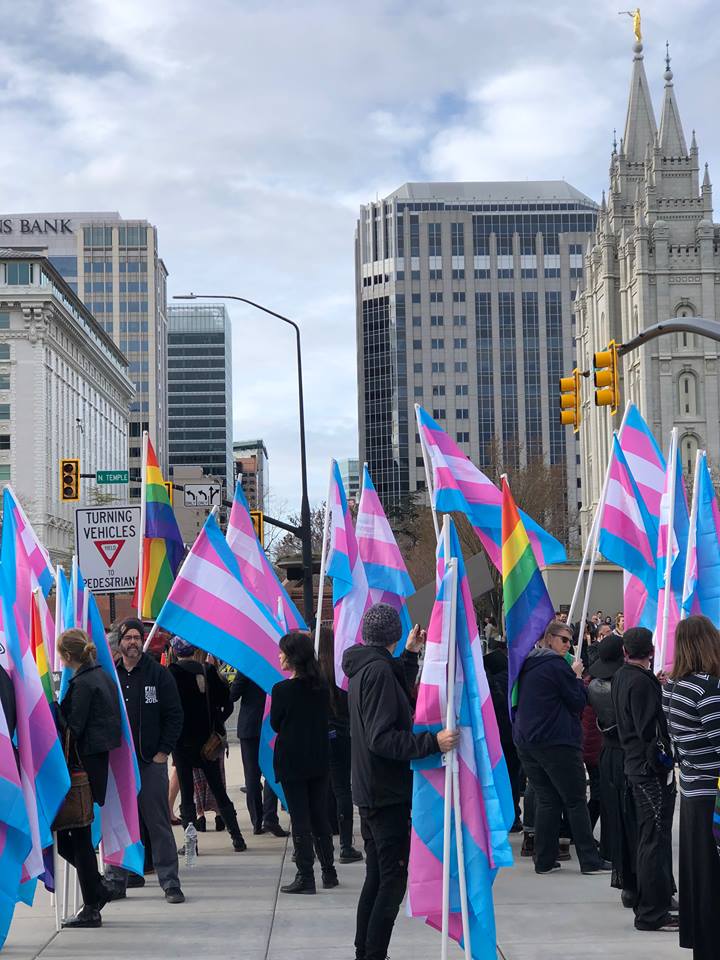‘The Church has always been anti-gay’; LGBT Community Reacts in the Wake of Mormon Policy Rescission

Last Thursday, President Dallin H. Oaks of the First Presidency of the Church of Jesus Christ of Latter-day Saints, commonly referred to as the Mormon Church, took to the stand and rescinded a policy that caused a massive uproar in Mormonism.
Leaked with the help of Truth & Transparency co-founder, Ryan McKnight, in November 2015, the policy in question has since been referred to as the “November policy” and sometimes as the “policy of exclusion”.
The policy named all gay Mormon couples apostates and forbade their children from being baptized until the age of 18. The announcement garnered national media attention and caused many to resign from the Church
On April 4, 2019, President Oaks altered the policy. In a statement released by the Church’s Newsroom, Oaks stated that that “children of parents who identify themselves as lesbian, gay, bisexual or transgender may be baptized without First Presidency approval.”
He added that, while gay marriage is still viewed as a “serious transgression” those that are married are no longer apostates. According to the Church’s handbook, the label of apostasy warrants excommunication.
The rescission of the policy created as large a shock as its implementation. Hundreds of Mormons took to social media to express their surprise, praise, and excitement. However, the reaction in the LGBT community did not express the same sentiments.
Weston Clark, board member of Equality Utah compared the Church's actions to gardening in a statement made to ABC4 News. He stated, “You can't plant weeds in your own backyard and then pick them and expect everybody to congratulate you for doing so.”
Similarly, dozens shared a quote from Malcolm X saying that progress is not “[sticking] a knife in a man's back nine inches and then [pulling] it out six inches”.
But, perhaps the most powerful statements since Thursday were the various forms of protest that happened at the Conference Center in Salt Lake City during the Church’s world-wide 189th Annual General Conference.
Dozens of LGBT individuals and allies took the street corner and stood in solidarity with gay and transgender pride flags in hand. River Jude August, an agender individual and one of the protesters, said they participated out of “solidarity with our queer family whose lives we lost because of the 2015 policy”.
August continued by saying, “Some of the most beautiful people are queer, like Bertita,” referring to Berta Marquez, a popular LGBT activist whose suicide in June 2018 sent shockwaves through both the Mormon and LGBT communities.
August says that leaving Mormonism saved their life and that the pain they and so many other LGBT individuals experienced is “irreconcilable”. They feel the Church rescinded the policy to “stop the hemorrhaging form the amount of members that have left the Church”.
June Hiatt, a queer woman who resigned from the Church shortly after the November policy, said it is time to have an honest and frank discussion about how the Church has historically treated the LGBT community. “The Church has always been anti-gay,” she said. “This policy does not change that.”
She added, “I think that’s the conversation we need to start having in open spaces, that the Church does not support the queer community.”
Hiatt says she has lost two LGBT friends to suicide “because of how the Church treated them”. One of these friends endured conversion therapy after, according to Hiatt, his bishop suggested it.
Another group of LGBT persons, identifying as active Mormons, held signs encouraging others to put differences aside and “hug a Latter Gay Saint” or a “transgender Mormon”. Peter Moosman, a gay Mormon, has been participating in this action since April 2016, the first General Conference following the November policy.
In a public Facebook post, Moosman said he started these actions because he “wanted queer members to have a glimmer of hope that they weren't alone.” Adding that “representation and visibility [matter]” and that he knows that life is “dark, lonely, and defeating” for LGBT Mormons still “in the closet.”
When asked if this action carried particular weight, Moosman told Truth & Transparency that it did because his face was featured in a picture published by Buzzfeed News covering the policy change. He noted that the “atmosphere” felt different. He explained that saying “people would occasionally approach us and ask us how we’re feeling about the policy rescission.”
Moosman also noted that they received “considerably less hugs” on Sunday morning during the silent protest that happened adjacent to Moosman’s action.
While the reactions from passersby were mixed, Blaire Ostler, a queer Mormon woman who participated in the hug campaign, reports that most were positive. She shared several such reactions on Facebook.
Ostler recounted a favorite incident when a man and his son approached and embraced her. The father then said “These things take time. Try to be patient with the knuckleheads who just don’t get it yet.”
Moosman reported that his first positive reaction came when a young woman approached him and confided in him that she was pansexual. He felt he was able to help her in that moment after speaking with her about “having hope, building confidence, and the power of authenticity”.
Moosman says he has since given thousands of hugs at these events and that this was the first instance in which he didn’t have any “negative or hostile face-to-face interactions”. Rather, he received a “flood of vitriolic attacks”, including a death threat, from anonymous persons online.
The two LGBT groups have certainly responded differently to their religion’s teachings regarding their sexuality, some having left the Church and others hoping to promote change from within. Those decisions were made apparent in the different ways they chose to protest this past weekend. However, both groups agree that this adjustment in policy is not enough.
Header photo: silent protesters outside the Conference Center in Salt Lake City wield transgender and gay pride flags on April 7, 2019. Photo courtesy of June Hiatt.